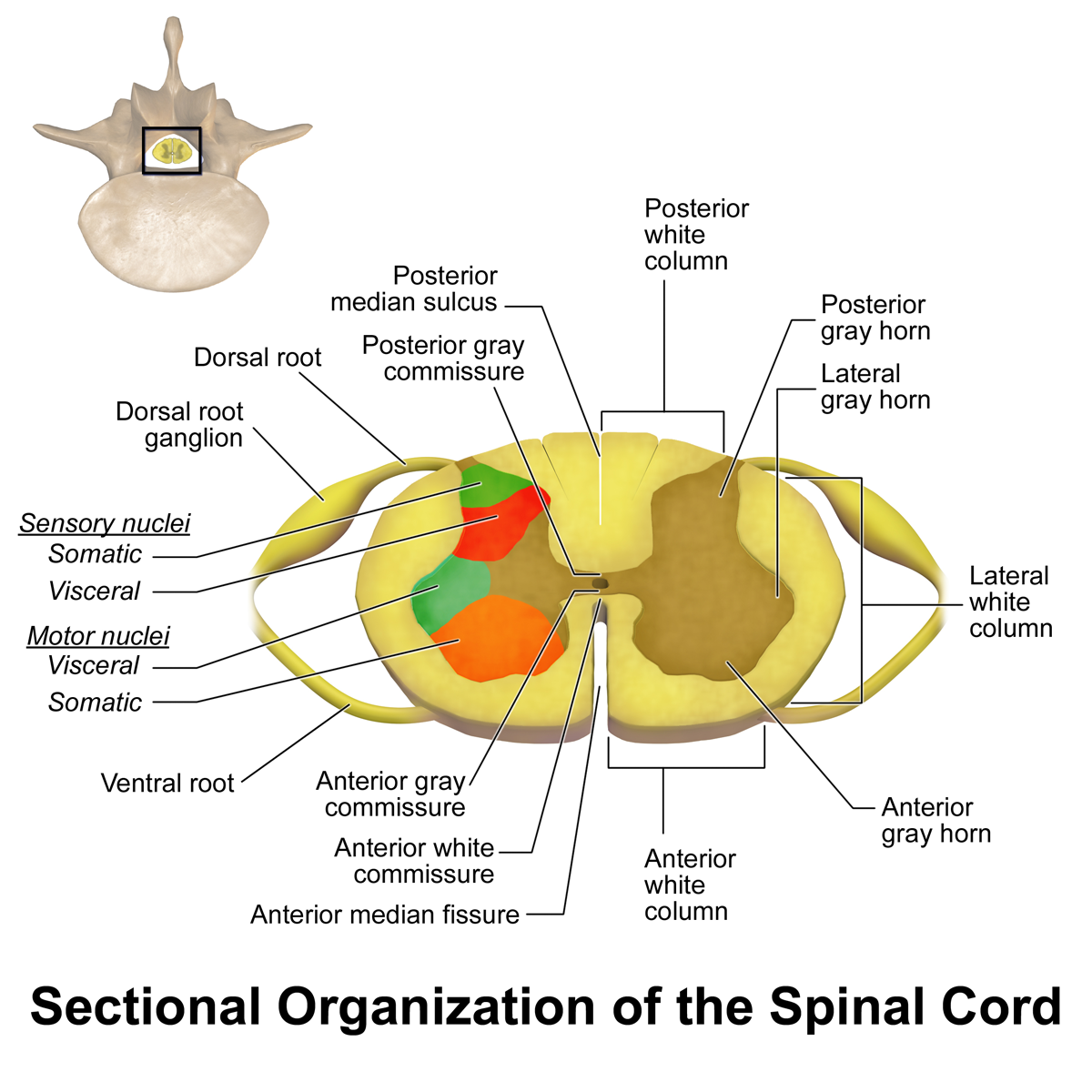Brain and ENT Clinic – Dr Lalit Mahajan In Nagpur & Dr Rachna Gangwani Mahajan In Nagpur
Spinal cord in Chhindwara

Spinal cord in Chhindwara! The spinal cord is a vital part of the central nervous system, serving as a major pathway for the transmission of nerve signals between the brain and the rest of the body.
It is a long, tubular structure that extends from the base of the brain down the back, enclosed and protected by the vertebral column (spine).
The spinal cord is cylindrical in shape and approximately 17 to 18 inches long in adults. It consists of gray matter and white matter. The gray matter contains cell bodies of neurons, while the white matter consists of myelinated nerve fibers that form tracts carrying signals up and down the spinal cord.
Why Choose Our Spinal Cord Services in Chhindwara?
1. Multidisciplinary Team: Firstly, Benefit from a collaborative approach with our team of neurosurgeons, orthopedic specialists, and rehabilitation experts who work together to ensure the best possible outcomes for spinal health.
2. State-of-the-Art Facilities: once, Our clinic/hospital in Chhindwara is equipped with advanced diagnostic tools and surgical facilities, allowing us to provide accurate assessments and perform complex spinal procedures with precision.
3. Individualized Treatment Plans: Thus, Recognizing that each patient is unique, our specialists create personalized treatment plans addressing a range of spinal issues, including herniated discs, spinal stenosis, and degenerative conditions.
Common Symptoms
-
Pain:
- Persistent or sharp pain in the back, neck, or along the spine may indicate spinal cord issues. The pain can radiate to other areas of the body, depending on the location and nature of the problem.
-
Weakness:
- Weakness in the limbs, difficulty lifting or holding objects, or a general feeling of muscle weakness. Thus, may be indicative of spinal cord dysfunction.
-
Numbness and Tingling:
- Numbness or tingling sensations, often described as “pins and needles,” may occur in the extremities or other parts of the body. This can be a sign of nerve compression or damage.
-
Loss of Sensation:
- Diminished or complete loss of sensation in certain areas of the body may occur when the spinal cord is affected. This can affect the ability to feel touch, temperature, or pain.
-
Motor Function Impairment:
- Difficulty with movement, coordination, or fine motor skills may be evident. This can include challenges with walking, balance or performing tasks that require precise control.
Treatments for Spinal cord conditions:
Conservative Management:
- Thus, Non-surgical or conservative treatments are often the first line of approach. once, This may include rest, physical therapy, medications , and lifestyle modifications to manage symptoms and improve function.
Physical Therapy:
- Physical therapy is a key component of spinal cord treatment. For instance, Therapists work with patients to improve strength, flexibility, and mobility. Specific exercises may be prescribe to address the underlying issue and enhance overall spinal health.
Pain Management:
- Therefore, Pain management techniques, including medications.thus, physical therapy modalities, and interventional procedures, may be recommende to alleviate pain associate with spinal cord conditions.
Bracing:
- In some cases, bracing or orthotic devices may be prescribed to support the spine, reduce pressure on affect areas, and promote proper alignment.
Medications:
- Thus, Medications may be prescribe to manage pain, inflammation, muscle spasms, or other symptoms associate with spinal cord conditions.
Epidural Steroid Injections: For inertance certain conditions causing nerve compression or inflammation, epidural steroid injections may be administered to provide relief by reducing inflammation around the spinal cord.
Surgery:
- Surgical intervention may be recommend for conditions that do not respond to conservative measures or in cases of severe spinal cord compression, instability, or trauma. Types of spinal surgery include:
- Discectomy: Removal of a herniate or damage disc.
- Spinal Fusion: Joining two or more vertebrae to stabilize the spine.
- Decompression Surgery: Relieving pressure on the spinal cord or nerves.
- Tumor Removal: Surgical excision of spinal tumors.
- Surgical intervention may be recommend for conditions that do not respond to conservative measures or in cases of severe spinal cord compression, instability, or trauma. Types of spinal surgery include:
